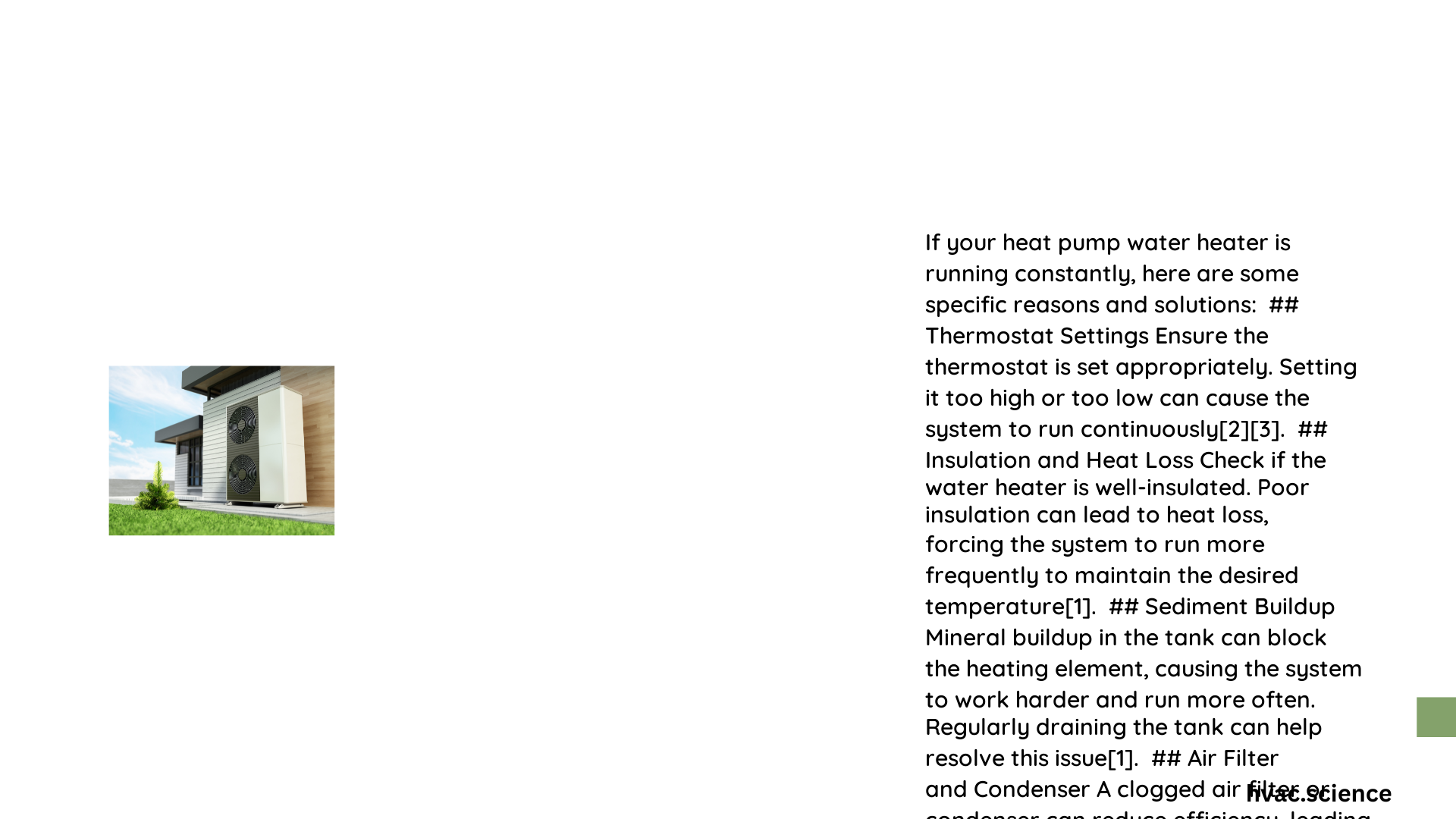Heat pump water heaters experiencing continuous operation can signal underlying issues ranging from ambient temperature challenges to system inefficiencies. Persistent running not only increases energy consumption but potentially indicates mechanical problems requiring immediate attention. Homeowners must understand the complex interactions between temperature thresholds, system components, and environmental factors to diagnose and resolve these persistent operational challenges effectively.
What Causes Continuous Operation in Heat Pump Water Heaters?
Why Does Ambient Temperature Impact Performance?
Heat pump water heaters rely heavily on surrounding air temperature for efficient operation. Key temperature-related factors include:
- Operational Temperature Range: Most units require ambient temperatures between 45°F-120°F
- Efficiency Threshold: Below 45°F, electric heating elements activate automatically
- Performance Degradation: Temperatures outside recommended range reduce system efficiency
| Temperature Range | System Response | Energy Consumption |
|---|---|---|
| Below 45°F | Electric Element Activation | High |
| 45°F-120°F | Heat Pump Optimal Performance | Low |
| Above 120°F | Potential System Stress | Moderate to High |
What Triggers Excessive Running?
Several critical factors contribute to continuous heat pump water heater operation:
- Incorrect Thermostat Settings
- Misconfigured temperature controls
- Overly aggressive heating demands
-
Inaccurate temperature sensing
-
Mechanical Complications
- Faulty temperature sensors
- Compromised compressor functionality
-
Refrigerant level irregularities
-
Installation Environment
- Inadequate ventilation
- Restricted airflow around the unit
- Inappropriate room temperature
How Can Energy Consumption Be Managed?
Continuous operation significantly impacts energy expenditure:
- Average Energy Spike: From 0.4 kWh to 4.2 kWh during high-demand periods
- Potential Monthly Cost Increase: $50-$100 additional energy expenses
- Efficiency Factor Reduction: Continuous running decreases overall system performance
What Diagnostic Steps Should Be Taken?
Homeowners can perform preliminary investigations:
- Verify ambient temperature conditions
- Check thermostat calibration
- Inspect air filters and ventilation
- Monitor energy consumption patterns
- Schedule professional maintenance
When Should Professional Intervention Occur?
Recommended professional assessment scenarios:
– Persistent continuous operation beyond 24-48 hours
– Unexplained energy consumption spikes
– Unusual system noise or performance degradation
– Complex mechanical issues beyond basic troubleshooting
What Repair Costs Can Be Expected?
Potential repair expenses:
– Compressor Replacement: $200-$800
– Electrical Component Repair: $100-$300
– Comprehensive System Diagnostic: $150-$250
Preventative Maintenance Recommendations

- Regular professional inspections
- Annual system calibration
- Maintain optimal room temperature
- Clean air intake and filters
- Monitor energy consumption trends
Conclusion
Understanding your heat pump water heater’s operational dynamics empowers proactive maintenance and energy management. While continuous running indicates potential issues, systematic diagnosis and timely intervention can restore system efficiency and control operational costs.
